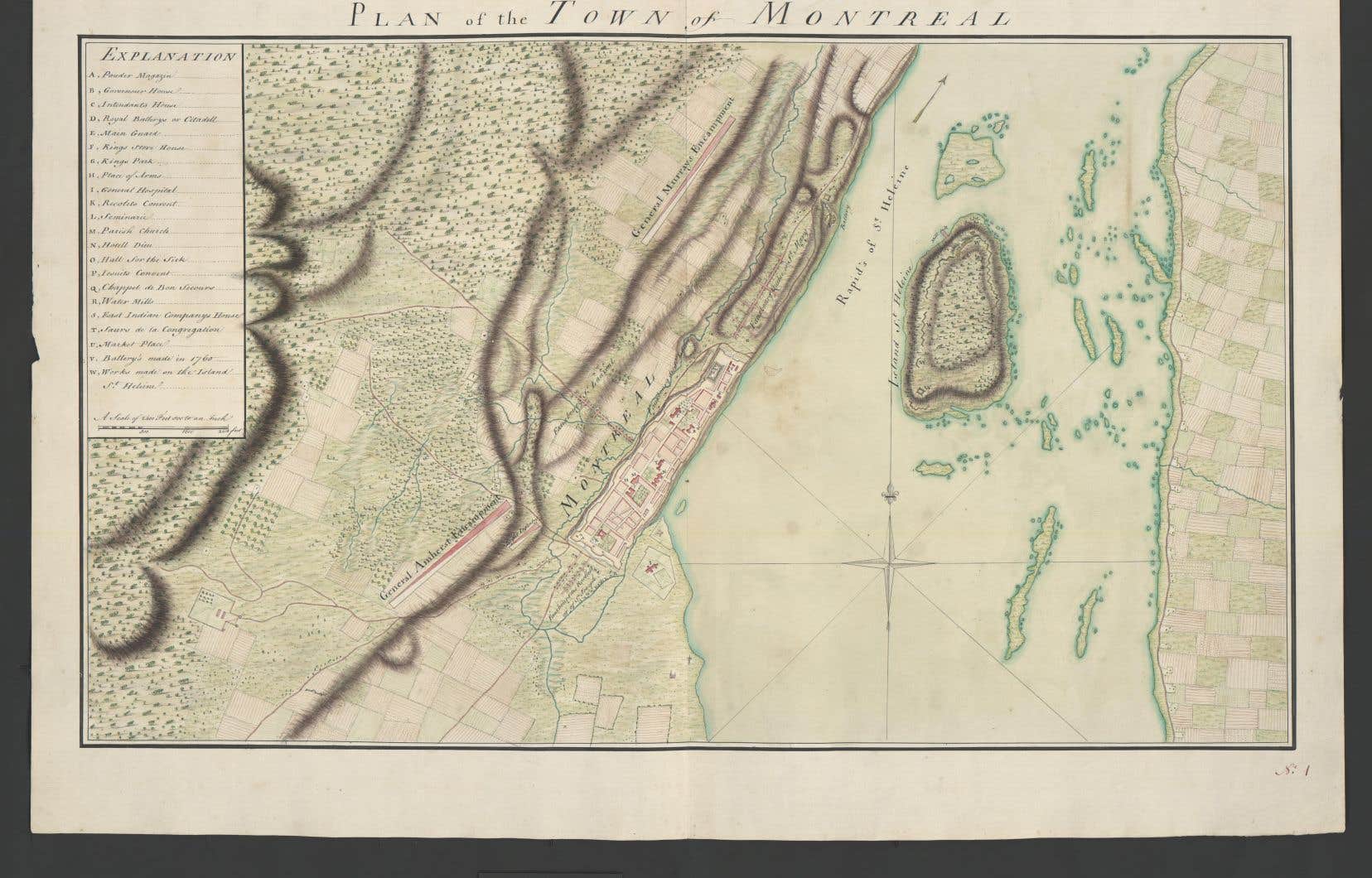On Sainte-Hélène Island, archaeologists have discovered traces of a cavity which could be associated with the French entrenchments dug in 1760 to defend Montreal against the British armies of General Amherst.
The cavity was found by chance while laying underground electrical conduits. ” It could be [les retranchements], but we do not have confirmation beyond all doubt, warns Mathieu Sévigny, of the Ethnoscop firm. We did not go to the bottom of the trench,” adds the archaeologist, recalling that the excavations were carried out as part of simple site supervision.
A similar depression was also observed in 2012 under the Chemin du Tour‐de‐l’Isle, which corresponds to the route of part of the French entrenchments of 1760. “It’s a bit heartbreaking,” comments Mr. Sévigny, “the mystery remains unsolved”.
Bastion
The fortification of Sainte-Hélène Island by the troops of General Lévis is the last act of the War of Conquest which pitted France against Great Britain for control of North America. Work began in August 1760, almost a year after the fall of Quebec following the Battle of the Plains of Abraham.
Armed with shovels and picks, soldiers from the Béarn battalion and Marine troops dug a zigzag trench around the edge of the island. The soldiers in shirt sleeves progress slowly through the orchards and vineyards which supply the cider mill of Baron de Longueuil, whose summer residence was near the current Biosphere.
The earth extracted from the ditch is thrown backwards to form a parapet from which the French soldiers and Canadian militia can shoot when the time comes. This temporary structure is held in place using baskets of branches, called fascines. “It could also be pieces of wood cut horizontally or small boxes,” explains historian André Charbonneau in an interview with The duty, I have seen all kinds. »
The outer edge of the ditch has a palisade, as indicated by the dotted line seen on a British map produced after the Conquest. “There is a double defense to prevent the enemy from approaching,” observes Charbonneau, “it was quite elaborate. »
Paradoxically, the French entrenchments of Saint Helena were defended by British artillery which was captured in front of Quebec in April 1760 during the Battle of Sainte-Foy. The cannons are pointed in the direction of the Sainte-Marie stream which runs along the suburb of the same name, downstream from Montreal. “The idea was to try to delay the enemy’s progress,” explains Mr. Charbonneau.
Auto-da-fé
British troops from Quebec, the Hudson River and Lake Ontario converged on Montreal at the beginning of September 1760. The imbalance of forces led the governor of New France, Vaudreuil, to begin talks with General Amherst. The latter, however, refuses to grant the honors of war to the French garrison, which means that its officers will no longer be able to fight for the rest of the conflict which continues in Europe.
General Lévis demands a breakdown in talks in a heated exchange with Vaudreuil. This supporter of total war goes so far as to propose fighting a final battle on the island of Saint Helena with the remaining ammunition to bring the British commander to his knees. “It would be unheard of to submit to such harsh and humiliating conditions for the troops, without being cannoned,” wrote Lévis in a memoir to Vaudreuil, which was mainly intended to impress the ministers at Versailles on his return to France.
Faced with the governor’s refusal, Lévis broke his sword then ordered his battalions to burn their flags so as not to have to hand them over to the conqueror. This textile burning will mark the imagination of French Canada. According to a legend popularized by the poet Louis Fréchette, the destruction of the standards did not take place in Montreal, but in Sainte-Hélène, at the very place where Lévis, this hero “black with powder, covered in blood”, had wanted to deliver a last stand worthy of Fort Alamo.
The legend of Saint Helena will be sufficiently evocative to be recreated at the Montreal wax museum. The scene featuring a mannequin from Lévis covered in human hair will be inaugurated one year before Expo 67 which led to the merger of Sainte-Hélène Island with its neighbor, Round Island, with the unloading of 28 million tons of soil and materials in the St. Lawrence River.
Remains
Segments of the 1760 entrenchments were still visible on Saint Helena in the early 1930s, according to an article in the Duty of the time. The remains, however, would have been filled in in the following years during landscaping work on the island which had been open to the public in 1874. It would be different for the British fortifications of the 19th century.e century, integrated into Jean-Drapeau Park, which this year celebrates its 150the birthday.
For the historian André Charbonneau, the excavation of the former French entrenchments of Sainte-Hélène would make it possible to understand the extent of these forgotten works which were to delay the fall of New France by a few days: “If someone wants to highlight these vestiges of heritage, so much the better because it would help us to better understand our past. »
